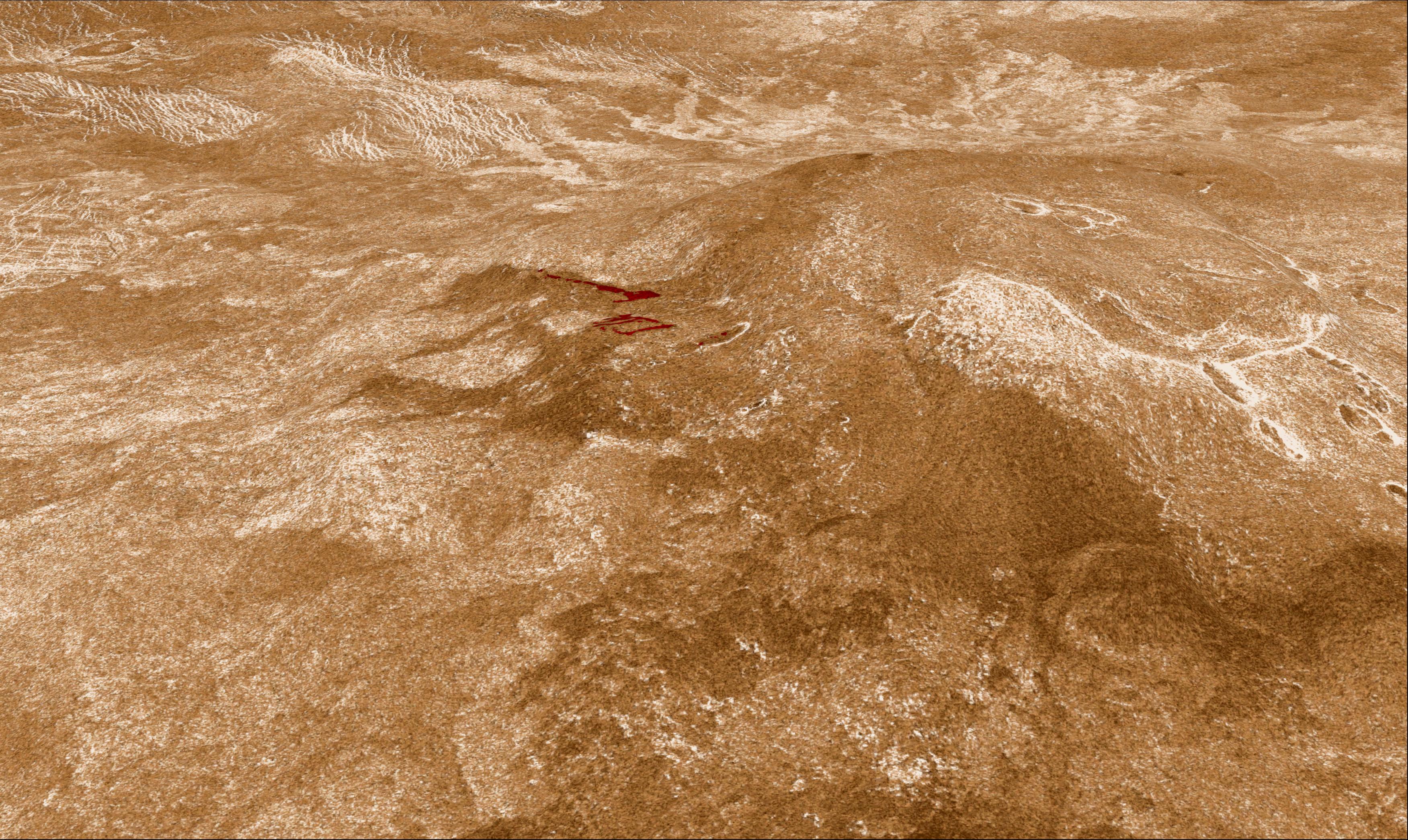News release
From:
The emplacement of volcanic lava flow has been observed in two different regions of Venus, suggesting that volcanic activity on the planet may be greater and more widespread than previously thought. The findings, published in Nature Astronomy, support previous evidence suggesting that Venus is currently volcanically active.
Venus’s thick atmosphere has made it difficult to directly observe the surface of the planet. However, global radar mapping performed in the 1990s by the Magellan spacecraft showed that Venus’s surface is covered with many volcanoes and has likely been shaped by widespread volcanic activity in its past — though the role of volcanism in the planet’s geologic present remained unclear. However, evidence of more recent activity from one volcanic vent on the planet’s surface was identified last year in data from the Magellan spacecraft.
Davide Sulcanese and colleagues analysed two sets of Magellan radar data obtained in 1990 and 1992 to look for evidence of volcanic activity. They found surface changes that could indicate volcanism in two areas where volcanic-related features are present, located on the western flank of Sif Mons and in western Niobe Planitia. After analysing the various possible sources, Sulcanese and colleagues suggest that these variations were likely caused by fresh lava flows.
The authors suggest that Venus is a geologically active planet in the present day, but also that present-day volcanism is rather widespread. They also suggest that volcanic activity on Venus is comparable to that of Earth, indicating that Venus is more volcanically active than previously thought.
Multimedia




 International
International


